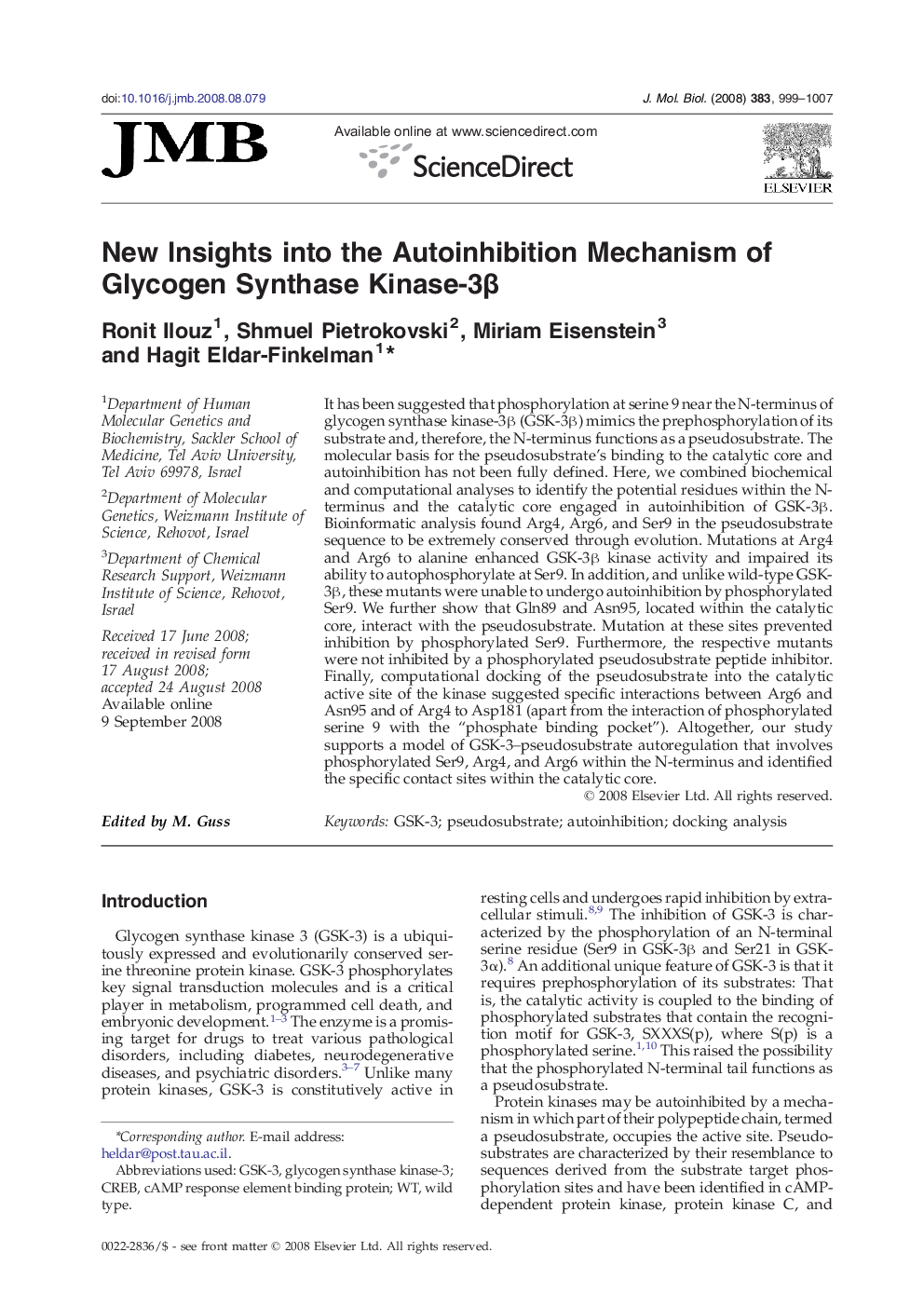| Article ID | Journal | Published Year | Pages | File Type |
|---|---|---|---|---|
| 2186857 | Journal of Molecular Biology | 2008 | 9 Pages |
It has been suggested that phosphorylation at serine 9 near the N-terminus of glycogen synthase kinase-3β (GSK-3β) mimics the prephosphorylation of its substrate and, therefore, the N-terminus functions as a pseudosubstrate. The molecular basis for the pseudosubstrate's binding to the catalytic core and autoinhibition has not been fully defined. Here, we combined biochemical and computational analyses to identify the potential residues within the N-terminus and the catalytic core engaged in autoinhibition of GSK-3β. Bioinformatic analysis found Arg4, Arg6, and Ser9 in the pseudosubstrate sequence to be extremely conserved through evolution. Mutations at Arg4 and Arg6 to alanine enhanced GSK-3β kinase activity and impaired its ability to autophosphorylate at Ser9. In addition, and unlike wild-type GSK-3β, these mutants were unable to undergo autoinhibition by phosphorylated Ser9. We further show that Gln89 and Asn95, located within the catalytic core, interact with the pseudosubstrate. Mutation at these sites prevented inhibition by phosphorylated Ser9. Furthermore, the respective mutants were not inhibited by a phosphorylated pseudosubstrate peptide inhibitor. Finally, computational docking of the pseudosubstrate into the catalytic active site of the kinase suggested specific interactions between Arg6 and Asn95 and of Arg4 to Asp181 (apart from the interaction of phosphorylated serine 9 with the “phosphate binding pocket”). Altogether, our study supports a model of GSK-3–pseudosubstrate autoregulation that involves phosphorylated Ser9, Arg4, and Arg6 within the N-terminus and identified the specific contact sites within the catalytic core.
